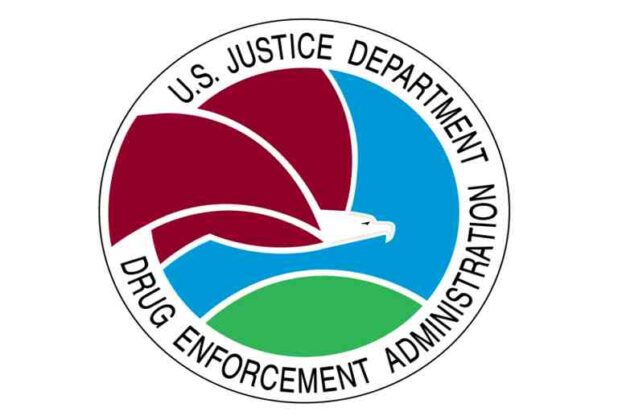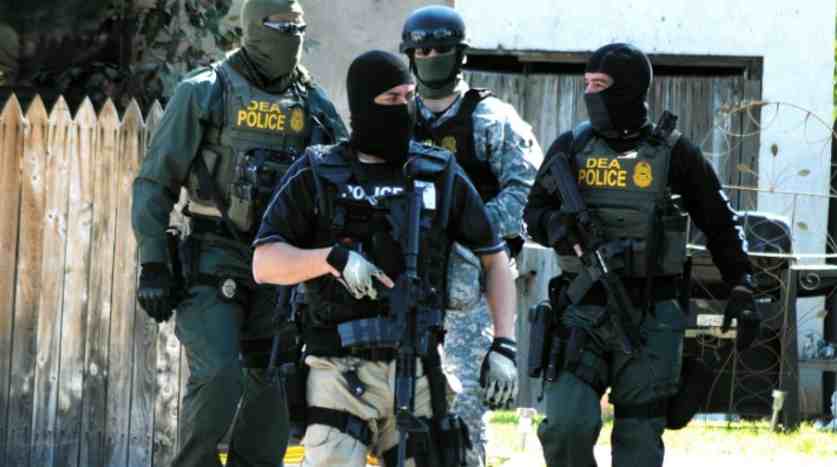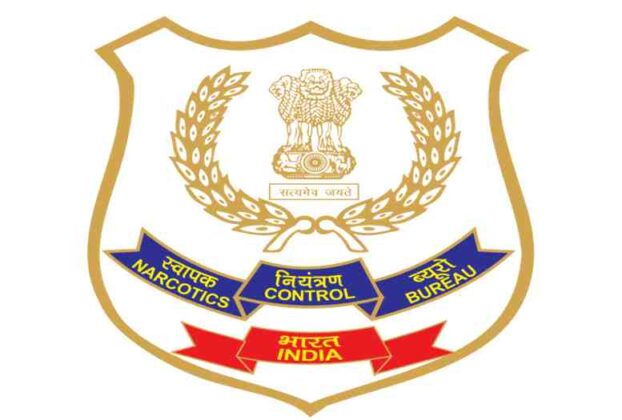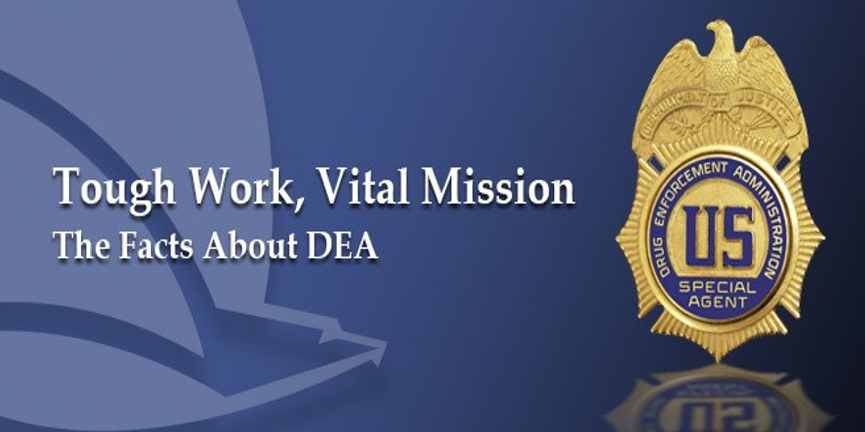- Umang Sagar
- Biography, Company / Organisation
Drug Enforcement Administration

Introduction
The Drug Enforcement Administration (DEA) is a federal law enforcement agency in the United States that is responsible for combating drug trafficking and distribution within the country. It is part of the Department of Justice. It is the principal agency for domestic Controlled Substances Act enforcement, with the Federal Bureau of Investigation, US Immigration, and Customs Enforcement, and US Customs and Border Protection all having concurrent jurisdiction. The DEA is solely responsible for coordinating and pursuing drug investigations in the United States, both at home and overseas.
The Drug Enforcement Administration’s (DEA) mission is to enforce the United States controlled substances laws and regulations, as well as to recommend and prosecute those organizations and principal members of organizations involved in the growing, manufacture, or distribution of controlled substances appearing in or destined for illicit traffic in the United States, through the criminal and civil justice systems of the United States, or any other competent jurisdiction; and to recommend and prosecute those organizations and principal members of organizations involved in the growing, manufacture, or distribution of controlled substances appearing in or destined for illicit trading.
History Of The Organization

Since its inception in 1973, the DEA’s mission has been to enforce the United States’ controlled substance laws and regulations, as well as to bring organizations and their principal members before the criminal and civil justice systems of the United States, or any competent jurisdiction, who are involved in the growing, manufacture, or distribution of controlled substances found in or destined for illicit traffic in the United States, and to recommend and support non-enforcement.
The Bureau of Internal Revenue began the long, strong, and noble heritage of federal drug law enforcement in 1915. Several government agencies were in charge of drug enforcement in the decades after that. The Bureau of Drug Abuse Control (BDAC) and the Federal Bureau of Narcotics (FBN) were the two authorities in charge of drug enforcement in the 1960s (FBN). During this time, America witnessed a significant transformation. The entrance of drugs into American culture, as well as efforts to “normalize” drug usage, began to have a devastating impact on the country. Nonetheless, American youngsters could walk to school in relative safety, only worrying about report cards or the neighborhood bully. Today, however, youngsters witness barbed wire, metal detectors, and signs informing drug sellers that school land is a “drug free zone” as they approach their schools. Drug traffickers and violence cause decent, law-abiding residents to take sanctuary behind locked doors in far too many places. Only four million Americans had ever experimented with drugs in 1960. That number has already increased to more than 121 million. Countless families, communities, and individuals have been negatively impacted by drug usage and drug trafficking, as evidenced by these data. Prior to the 1960s, Americans did not consider drug use to be an acceptable kind of conduct, nor did they believe it was an unavoidable part of life. Indeed, between the 1960s and the early 1990s, drug tolerance led to massive rises in crime, and America’s landscape was irrevocably changed. Although drug usage had not yet reached an all-time high in the early 1970s, the problem was serious enough to necessitate action. As a result, in 1973, the Drug Enforcement Administration (DEA) was established to address America’s burgeoning drug issue. The well-organized international drug trafficking syndicates based in Colombia and Mexico had not yet established themselves as the world’s preeminent drug suppliers at the time. All of the heroin and cocaine, as well as the majority of the marijuana, that entered the United States was smuggled by smaller international drug traffickers that targeted cities and towns across the country.
The French Connection, a major law enforcement investigation conducted by the DEA’s predecessor agency, the Bureau of Narcotics and Dangerous Drugs (BNDD), dramatically highlighted the intricacy and scale of America’s heroin issue. Several critical events occurred in the years leading up to 1973, all of which would have a long-term impact on the DEA and federal drug control operations. By the time the DEA was established by Executive Order in July 1973 to form a single unified command, America was already seeing indicators of the coming drug and crime crisis. Many of the DEA’s initiatives had their origins in predecessor agencies, which is crucial to understand in order to grasp how the DEA has grown into the vital law enforcement entity it is today.
Mission & Objectives

- The DEA dedicates all of its resources and personnel to enforce the United States’ restricted substance laws and regulations. While the DEA’s purpose involves investigating criminals and narcotics gangs who trade in illegal drugs, it also covers other critical duties such as:
The DEA’s Diversion Control Division regulates the manufacture and distribution of controlled medicines (such as scheduled prescription prescriptions) and listed substances.
Through the DEA’s Intelligence Division, providing and organizing the collection, processing, and dissemination of world-class drug-related intelligence for DEA and other enforcement agencies.
The DEA’s Office of Forensic Sciences analyses evidence and conducts science-based research to aid drug-related investigations and the criminal justice system in general. This covers not just chemical analysis of suspected controlled substances, but also digital evidence analysis, crime scene investigations, and hazardous chemical waste disposal.
Support for drug demand reduction and prevention programmes, such as the Red Ribbon Campaign, National Take back Day, Operation Engage, and One Pill Can Kill, through educational and other campaigns and activities.
The Drug Enforcement Administration’s (DEA) mission is to enforce the United States’ controlled substances laws and regulations and to bring those organizations and principal members of organizations involved in the growing, manufacture, or distribution of controlled substances appearing in or destined for illicit traffic in the United States before the criminal and civil justice systems of the United States, or any other competent jurisdiction. The DEA also has supervision jurisdiction over persons and entities engaged in the prescribing, dispensing, or distribution of prohibited substances, such as manufacturers, distributors, prescribing practitioners, and pharmacies, and can prosecute registrants who break the law. The DEA also promotes and supports non-enforcement activities aimed at lowering the availability of illicit controlled substances on both the local and international markets.
DEA's Main Responsibilities Include

Investigate and prepare for the prosecution of major violators of controlled substances laws operating domestically and internationally, including those linked to regional cells, global drug cartel networks, and narco-terrorism organizations, as well as those involved in gangs and who perpetrate violence within U.S. communities.
Task forces, mutual investigations, information sharing, resource sharing, deconfliction, and training are all used to increase the DEA’s capabilities and limited resources.
Cooperate with foreign governments through bilateral anti-drug investigations and capacity-building efforts with colleagues in the host country.
Prevent, identify, and investigate the diversion of regulated pharmaceuticals and listed chemicals from authorized sources, while guaranteeing a sufficient and continuous supply for legitimate medical, commercial, and scientific purposes.
Conduct community outreach through local partnerships to assist communities in addressing reoccurring drug and violent crime issues that may return following drug enforcement efforts.
Deny drug trafficking groups drug earnings and ill-gotten gains in order to disrupt trafficking and restrict drug availability.
Indian Counterpart: Narcotics Control Bureau

The Narcotics Control Bureau (abbreviated as NCB) is central law enforcement and intelligence organization in India that is part of the Ministry of Home Affairs. Under the requirements of the Narcotic Drugs and Psychotropic Substances Act, the agency is responsible for fighting drug trafficking and the use of illegal substances. It was established in 1986 and is responsible for coordinating with Indian state governments and other central departments, as well as implementing India’s international drug trafficking duties and helping international and foreign drug law enforcement authorities.
The national headquarters of the Narcotics Control Bureau is in Delhi, the nation’s capital. It has field units and offices in Mumbai, Indore, Kolkata, Delhi, Chennai, Lucknow, Jodhpur, Chandigarh, Jammu, Ahmedabad, Bengaluru, Guwahati, and Patna, which are organized by zones. The Director-General of the National Crime Bureau is a member of the Indian Police Service (IPS) or the Indian Revenue Service (IRS) (IRS). Officers in this organization are chosen from the Indian Revenue Service, Indian Police Service, and other paramilitary organizations, in addition to the direct feeder grade.
The Economic Intelligence Council also has a representative from the Narcotics Control Bureau. NCB is part of the Home Ministry, which is in charge of enforcing the 1985 Narcotic Drugs and Psychotropic Substances Act. According to Section 24(1) of the RTI Act 2005, the NCB is not subject to the Right to Information Act.
Functions Include

- The Narcotics Control Bureau’s main goal is to combat drug trafficking throughout India. On a national and state level, it works closely with Customs and Central Excise/GST, State Police Department, Central Bureau of Investigation (CBI), Central Economic Intelligence Bureau (CEIB), and other Indian intelligence and law enforcement organizations. The NCB also assists India’s drug enforcement agencies with resources and training in the fight against drug trafficking. The NCB also keeps an eye on India’s borders to find out where smuggling activities with international traffickers are taking place.
Statistics And Recent Developments

Medical professionals, researchers, and manufacturers have access to “Schedule I” drugs, as well as Schedules 2, 3, 4, and 5. The DEA has a registration system in place that allows anyone to manufacture, import, export, and distribute drugs by filing DEA form 225. Authorized registrants apply for and are given a “DEA number” if they are approved. A controlled substance can be manufactured (drug firms), distributed (research), prescribed (doctors, pharmacists, nurse practitioners, and physician assistants, among others), or dispensed (pharmacy) by an organization with a DEA number.
Many of the issues linked with substance use disorders are the result of legally manufactured controlled substances being diverted from their intended usage into the illicit drug trade. Many analgesics, depressants, and stimulants sold for legitimate medical purposes have the potential to become addictive. As a result, for the sake of preventive and public safety, certain listed chemicals have been brought under legal supervision. Controls are in place to guarantee that these “restricted substances” are readily available for medical use while also prohibiting their illegal distribution and non-medical use. This can be a difficult Endeavour, posing challenges for legitimate patients and healthcare practitioners while avoiding illegal drug trafficking and usage. All enterprises that manufacture or distribute banned medications, as well as health professionals who can dispense, administer, or prescribe them, and pharmacies that can fill prescriptions, are required by federal law to register with the DEA. Registrants must conform to a number of regulatory criteria, including medication security, record accountability, and standard adherence.
Diversion Investigators are in charge of all of these investigations (DIs). DIs undertake investigations to locate and investigate potential diversion sources, as well as take appropriate civil and administrative action. The use of Prescription Database Management Programs (PDMP) can help with inquiry and surveillance.
Overdoses from illegal fentanyl tablets or as a fatal adulterant in heroin have decimated North America in 2019/2020. In the first three months of 2020, an estimated 19,416 people died of a drug overdose in the United States, compared to 16,682 in the same period of 2019; this trend was fueled by synthetic opioids (especially illicitly manufactured fentanyl and analogs), whereas heroin overdoses have decreased in continental Europe, and illicit, synthetic opioids are practically absent. Fentanyl is a powerful anesthetic that is only used in hospitals and was created by Janssen Pharmaceutica in the 1970s. Addicts in Europe usually take heroin from Western Asia, which is less likely to contain fentanyl. In North America, heroin is now responsible for fewer deaths than meth or cocaine, a dramatic shift that has occurred in the previous two years as heroin has all but vanished in some areas. Fentanyl-laced heroin powder or tablets have filled the hole left by the absence of heroin from Asian suppliers.

As federal agencies failed to prevent the stream of illicit, synthetic drugs into the US, the US set another record in fentanyl deaths in October 2021. Despite the fact that fentanyl production is usually attributed to illegal laboratories in “China,” all fentanyl pills are sold by American gangs. A facility in Utah was discovered to be the source of a large portion of the illicit fentanyl dosages supplied in the United States in 2018. Because federal investigators were unable to identify the true source of fatal opioids distributed on the dark web, the US has resorted to incarcerating small-time drug users and dealers, rather than permitting a “harm reduction” approach to opiate usage.
The American authorities classified MDMA and its equivalents as a substance with the potential for addiction in 1985. During this time, the DEA convened multiple public hearings on the new drug. The DEA’s administrative law judge concluded that MDMA and its analogs were not of great concern based on all of the data and circumstances offered at the time, and recommended that they be put in Schedule III. Because of its addictive potential, the DEA administrator ignored the suggestion and ordered MDMA to be placed in Schedule I, the most restricted category under the Controlled Substances Act.
Conclusion
As a law enforcement agency, the DEA’s principal objective and obligation are to enforce the nation’s federal drug laws.
The Drug Enforcement Administration (DEA) acknowledges that not only reducing the amount (supply) of drugs is critical to a safe and drug-free country, but also reducing the desire (demand) for illicit substances is a critical component of effectively reducing drug usage in our country. As a result, the DEA established the Community Outreach Section as a vital supplement to its primary law enforcement mission, and drug use prevention was identified as one of the seven objectives in the DEA’s goal to battle and prevent the spread of drugs.
Top 13 Interesting Facts About DEA
The Drug Enforcement Administration is the premier law enforcement agency on the front lines fighting the War on Drugs. The mission of the (DEA) is to enforce the controlled substances laws and regulations of the United States and bring to the attention of the criminals involved in the growing, manufacture, or distribution of controlled substances appearing in or destined for illicit traffic in the United States.
This Federal Law Enforcement Agency recruits, trains, and deploys America’s elite agents into the world’s harshest environments to combat cartels and disrupt their operations. Due to the dangerous nature of their job, 85 agents have sacrificed their lives in service to the United States. Here are 6 things you didn’t know about these clandestine operators fighting the evils of narco-terrorism.
It was founded by President Richard Nixon- On July 1, 1973, President Nixon merged the Bureau of Narcotics and Dangerous Drugs (BNDD), the Office of Drug Abuse Law Enforcement (ODALE), and over 600 Special Agents from the Customs bureaus into the consolidated force we know today.
They provide oversight of Legal Drugs too- The Drug Enforcement Administration licenses anyone who prescribes or dispenses drugs. However, the license must be renewed every three years. The DEA has strict rules on prescription authority and record keeping. Prescribing personnel who, in the view of the DEA, abuse their privilege, are subject to the full extent of the law and loss said license.
They were trained for combat by the Army- The drug trade also funds actual terrorists in the middle east, and their source of income had to be destroyed. The U.S. expanded its counter-narco mission in Afghanistan in 2005 with the DEA at the helm. The U.S. military provided air support and cargo planes to the DEA, as well as intelligence and logistics support.
Special Response Team (SRT) program was created in 2016. The SRT was designed to bridge the gap between tactical operations conducted by field agents and those requiring specialized tactics due to elevated mission risks. SRT operators are highly trained in breaching tactics and an array of weapon systems.
The DEA wants to double marijuana production…for research- The agency has increased the amount of marijuana from 978 pounds in 2017 to more than 2,500 pounds in 2018. In 2019, the agency proposed a cannabis quota to more than 5,400 pounds — that’s a lot of weed.
In the United States, the DEA has 21 divisions and 226 field offices. Globally, it has offices in 66 countries. It employs 9,600 people—5,000 of whom are Special Agents. All of this, and the operations they conduct, run somewhere around $2.87 billion annually. What are they doing with all that money, you ask? Last year they arrested 30,476 people, seized 80,000 pounds of cocaine and 780,000 pounds of marijuana. There were 11,210 meth lab incidents last year. The worst offending meth state? Missouri. Since its inception, the DEA has cost the taxpayers $536,367,800,000.
The Drug Enforcement Administration licenses anyone who prescribes or dispenses drugs. This license must be renewed every three years. The DEA has pretty strict rules on prescription authority and recordkeeping. Prescribing personnel who, in the view of the DEA, abuse their privilege, are subject to large fines and loss of license.
The United States stepped up its counter-narcotics mission in Afghanistan in 2005, and the DEA took the lead on this enhanced mission. The U.S. military provided rotary-wing aircraft and cargo planes to the DEA, as well as intelligence and logistics support. The Army trained DEA agents on the use of combat arms and how to make tactical movements, as well as the finer points of night operations and how best to employ night vision goggles. There was also extensive training on spotting IEDs.
The Drug Enforcement Administration has a wide footprint in pop culture. DEA agents recruited James Bond for a mission in License to Kill. The DEA had its own reality TV series on Spike TV from 2008 to 2009. Meanwhile, every crime show on television (which, by my count, is every show on television) has a DEA agent turn up to solve a mystery from time to time. The most famous DEA agent on television is probably Breaking Bad’s Hank Schrader, the Assistant Special Agent in Charge of the Albuquerque DEA field office, and brother-in-law to meth chemist Walter White.
There are eighty-two names on the Drug Enforcement Administration Wall of Honor, which commemorates the men and women of the DEA lost in the line of duty. They made the ultimate sacrifice in places as diverse as the streets of Wichita, on reconnaissance missions in Peru, and in the mountains of Afghanistan.
Five members of the DEA were killed when Timothy McVeigh blew up the Murrah Federal Building in Oklahoma City. The domestic terrorist was specifically targeting the DEA, ATF, and FBI. As a result, DEA headquarters was soon reclassified as a “Level IV security” federal building—one level below CIA Headquarters at Langley. (Except for Level V buildings, which are those deemed essential for national security, federal building security levels are determined by square footage, personnel numbers, and responsibility.)



